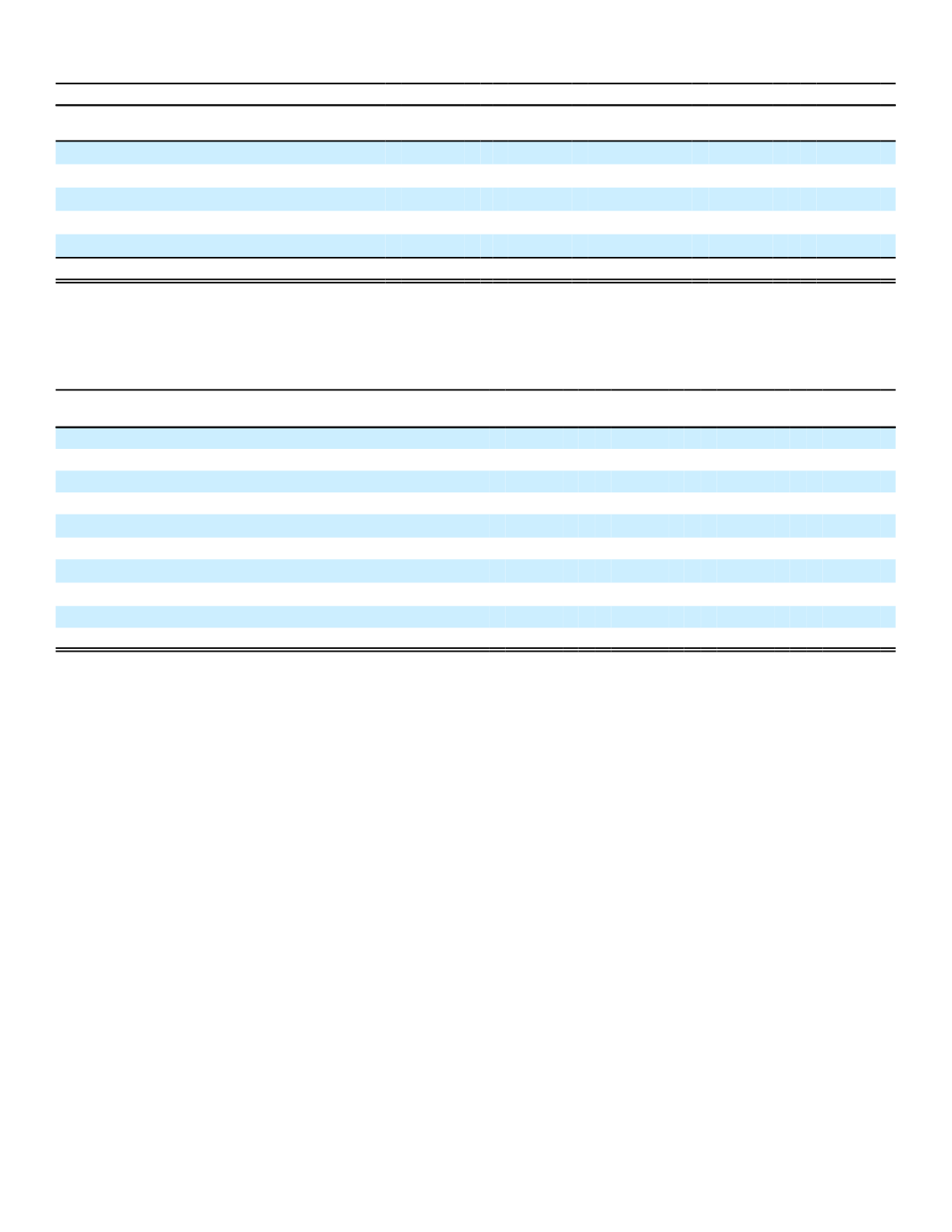

Composition of Securities Portfolio by Credit Rating
2016
2015
Amortized
Cost
Fair
Value
Amortized
Cost
Fair
Value
AAA
2.0%
1.9%
1.3%
1.3%
AA
5.0
5.0
5.7
5.7
A
63.1
65.2
61.0
63.0
BBB
24.6
23.2
26.9
25.1
BB or lower
5.3
4.7
5.1
4.9
Total
100.0% 100.0%
100.0% 100.0%
As of December 31, 2016, our direct and indirect exposure to securities in our investment portfolio that were
guaranteed by third parties was immaterial both individually and in the aggregate.
The following table presents the 10 largest unrealized loss positions in our portfolio as of December 31, 2016.
(In millions)
Credit
Rating
Amortized
Cost
Fair
Value
Unrealized
Loss
Diamond Offshore Drilling Inc.
BB
$ 141
$ 96
$ (45)
Noble Holdings International Ltd.
B
98
68
(30)
Deutsche Postbank AG
BB
206
179
(27)
Investcorp Capital Limited
BB
368
346
(22)
AXA
(1)
BBB
282
263
(19)
National Oilwell Varco Inc.
BBB
97
79
(18)
Kommunal Lanspensjonskasse (KLP)
(1)
BBB
210
193
(17)
Baker Hughes Inc.
BBB
122
107
(15)
Transocean Inc.
B
72
57
(15)
Bank of America Corp.
BBB
386
371
(15)
(1)
Includes perpetual security
Generally, declines in fair values can be a result of changes in interest rates, yen/dollar exchange rate, and changes
in net spreads driven by a broad market move or a change in the issuer's underlying credit quality. At times in 2016,
market volatility was at elevated levels, especially in the energy and commodity-related sectors. As we believe these
issuers have the ability to continue making timely payments of principal and interest, we view these changes in fair value
to be temporary and do not believe it is necessary to impair the carrying value of these securities. See the Unrealized
Investment Gains and Losses section in Note 3 of the Notes to the Consolidated Financial Statements for further
discussions of unrealized losses related to financial institutions, including perpetual securities, and other corporate
investments.
Securities by Type of Issuance
We have investments in both publicly and privately issued securities. Our ability to sell either type of security is a
function of overall market liquidity which is impacted by, among other things, the amount of outstanding securities of a
particular issuer or issuance, trading history of the issue or issuer, overall market conditions, and idiosyncratic events
affecting the specific issue or issuer.
The following table details investment securities by type of issuance as of December 31.
55


















